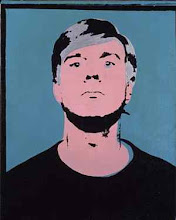 |
| Christopher Williams, Model: 1964 Renault Dauphine-Four, R-1095, 2000 (See full caption, below) |
Christopher Williams achieves something remarkable: technically immaculate photographs that are simultaneously seductive and witty critiques of the role of photography in consumer culture. The playful conceptualism and critical acuity of this ‘capitalist realism*’ reflects the fact that he studied at CalArts (The California Institute of Arts) where he was taught by the pioneering Conceptual artists John Baldessari and Douglas Huebler.
In addition to his creative examination of the nature and uses of commercial photography, Williams also takes a wry approach to gallery display. The installation is carefully and precisely organised and integrates walls removed from previous exhibitions; no explanatory texts are provided in the gallery but the captions from the previous exhibition (of abstract art) have been allowed to remain! Pedantically exhaustive captions are provided in the (almost) unillustrated catalogue. (See examples, below.)
(*Williams was shortlisted for the 2012 Deutsche Börse Photography Prize (see below) for his exhibition Kapitalistischer Realismus at Důmumění České Budějovice, Budweis, Czech Republic.)
Read reviews by Sean O'Hagan and Laura Cumming; read reviews of New York MoMA and Art Institute of Chicago showings by Peter Schjeldahl, Roberta Smith and Lori Waxman.
Watch short videos of Williams talking about The Production Line of Happiness and Kapitalistischer Realismus?
(Click on images to enlarge.)
 |
| Christopher Williams (American, born 1956). Bouquet for Bas Jan Ader & Christopher D’Arcangelo, 1991. Lorrin and Deane Wong Family Trust, Los Angeles. © Christopher Williams |







%2C%2B1937%2B(2).jpg)

.jpg)
%2C%2B1925%2B(2).jpg)






.jpg)
.jpg)














